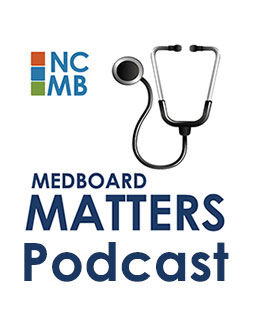Caring for pain patients in the midst of mounting opioids regulation
Categories: President’s Message Comments: 0 comments Print Friendly Version | Share this item This summer marked a milestone in North Carolina’s efforts to stem the tide of opioid overdoses in the state with the passage of the Strengthen Opioid Misuse Prevention (STOP) Act. The STOP Act aims to reduce overdose deaths through strategic provisions designed to prevent inappropriate and/or excessive opioid prescribing. NCMB supports these goals.
This summer marked a milestone in North Carolina’s efforts to stem the tide of opioid overdoses in the state with the passage of the Strengthen Opioid Misuse Prevention (STOP) Act. The STOP Act aims to reduce overdose deaths through strategic provisions designed to prevent inappropriate and/or excessive opioid prescribing. NCMB supports these goals.As Board President, I understand that the STOP Act contains necessary changes which, over time, should reduce the supply of prescription opioids circulating in NC and prevent patient harm. As a practicing physician, I cannot help but worry about the negative impact these changes may have on patients depending on how clinicians respond to intensified government and regulatory scrutiny.
Since NCMB announced its opioids investigative program, the Safe Opioid Prescribing Initiative (SOPI), in Spring 2016, the staff has fielded countless calls and emails from patients who report their providers have cut opioid dosages precipitously, or have arbitrarily declined to prescribe opioids at all. Many of these patients tell NCMB that their prescribers specifically stated they will “lose their license” if they don’t cut back on opioid prescribing and/or fail to strictly follow the CDC Guideline for Prescribing Opioids for Chronic Pain. Within hours of the signing of the STOP Act into law on June 29, the Board started getting calls from concerned patients and prescribers, who wondered how this new law might further impact or limit access to pain treatment.
There’s no question that, with increased regulation and evolving standards of care, the difficult challenges faced by medical professionals who treat pain are becoming more arduous. Clinicians undoubtedly feel more pressure to reduce prescribing, even as patients continue to request treatment.
What is a prescriber to do?
There is no simple answer to this question. I can only say that treatment decisions must be guided by clinical judgment individualized for each patient, not by a desire to avoid Board scrutiny or regulatory action. Sometimes clinical judgment may lead to a course of treatment that diverges from specific recommendations contained in the CDC Guideline, but is the best option for the patient. As with anything else in medicine, when making difficult treatment decisions clinicians must ask themselves: “Is this treatment safe? Is it medically justifiable? Is it going to benefit the patient?”
The Board’s goal with respect to opioids has always been safe and appropriate care. That means putting a stop to inappropriate or excessive opioid prescribing. It also includes supporting the professional obligation of medical practitioners to provide effective and responsible care to their pain patients. These aren’t platitudes or empty promises. I know, because I’ve observed how the Board handles opioid prescribing investigations firsthand. For example, at the July Board Meeting, NCMB reviewed several cases that were opened through the Safe Opioid Prescribing Initiative. Three cases that were opened based on high dose, high volume opioid prescribing (NCMB investigated the top one percent of licensees prescribing 100 morphine milligram equivalents per patient, per day) were closed with no action against the licensee, even though each of these prescribers routinely managed patients at doses far exceeding 100 MMEs per day. Why? In each case, review of patient records by the Board and by independent medical expert reviewers found the care to be thoughtful, reasonable, medically justified and well documented. The prescribers confirmed pain generators, documented failed nonopioid therapies, supplied evidence of improved pain and function in response to opioids, demonstrated pharmacovigilance and showed reasonable efforts to minimize opioid doses. In short, the Board found the care to be appropriate.
It’s clear that the practice of medicine is in the midst of a swift pendulum swing towards a much more cautious and conservative role for opioids in pain management. As NC prescribers decide how this should change what they do in clinic, we must remember who is at the heart of the opioid crisis: patients with pain. NCMB can’t (and shouldn’t) tell prescribers in advance exactly what they should do when faced with hard choices with their pain patients, but the Board is committed to providing support through the resources and information on its website at www.ncmedboard.org/safeopioids
Be well,
Eleanor E. Greene, MD, MPH
Board President
